You must have the bird in your heart before you can find it in the bush.
― John Burroughs[i], American Naturalist
Who are the participants in our Photo Ahimsa practice? Jim is often the photographer; Dedrie is a ‘field’ person, and Hilda, the Editor, is a standby photographer. The other willing participants are often other family members, and last, but not least, our avian dwellers in backyards, gardens, parks, national parks, and sporting ovals throughout Australia.
One can practice Photo Ahimsa anywhere where there are birds! To illustrate. Recently, from our apartment window, looking out at the massive River Red Gum in our neighbour’s garden, we were transfixed by the antics of a Sulphur-crested Cockatoo (Figure 2 below), entering her nest—a huge hole on the other side of the branch. It was a captivating moment as the bird shuffled along doing circus tricks as it went, finally disappearing into the large hole.
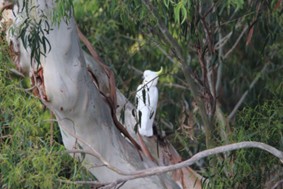
Figure 2: Sulphur Crested Cockatoo—Toorak, Victoria.
You don’t need to follow ‘best practice’ methods to succeed at Photo Ahimsa; there are, however, some basic steps needed for success.
Effective communication with potential avian friends, who fly away readily, requires a lot of patience and time. Good vision and hearing are an advantage, and slow, quiet movements are highly recommended.
We use low-cost aging equipment, such as a Canon EOS 200D DSLR. We use a Tamron SP 150-600mm F/5–6.3 telephoto lens to capture the tiny, elusive subjects or those at a distance. The downside of using a telephoto lens is its weight, which can lead to the affliction called ‘heavy camera tremble’. To counter this, we often look for a stable surface to rest the camera on, or we revert to using a tripod in exceptional circumstances. We follow Google’s advice to use a high shutter speed while photographing with the heavy lens to help achieve sharp, blur-free images.
We also use our Samsung Android phone cameras when we can get close enough—a practice avoided by most professional birders—we’re constantly advised.
Some good fieldcraft will help. Often, when we are about to take a photo, the bird will decide to fly. We have found that often the bird is the first to observe our presence, as we are usually the intruders. The bird may give an alarm call or start telling us to ‘get lost’ in loud calls and chatter. They usually stop singing or chirping and hesitantly continue again when we move away. If we use binoculars, we often notice that the bird’s eyes observe our every step.
We try to avoid total bird-centric images; the habitat is equally important, as are other species of birds, animals or plants that share their habitats.
Sometimes, a photo is too good to be deleted. We occasionally use photo-shopping skills to create visually appealing photos. We use the PC Windows 11[ii] image editor to rescue images that were spoiled by poor lighting, such as the image of the Yellow-tailed Black Cockatoo in Figure 3 below.

Figure 3: Yellow Tailed Cockatoo—Tasmania, West Coast.
Sometimes, when we set out to embrace Photo Ahimsa, we might unexpectedly encounter its opposite—Photo Himsa[iii]. We’ve had our share of Photo Himsa moments while trying to practice Photo Ahimsa. For instance, we’ve faced sunburn, dealt with bug or tick bites, encountered snakes, gotten lost, and walked into thorns. Photo Himsa and Photo Ahimsa often occur together.
You may need to become ‘besties’ with the creepy crawlies. If you’re going to snap photos of birds, it’s best to shake off those fears of spiders, bugs, and whatever else is lurking about. After all, you can’t be mindful while panicking if you see a spider every time, you’re crawling through the bush to get a shot of a kookaburra (Figure 4 below). Embrace the spiders and the bugs and take photos of them too!
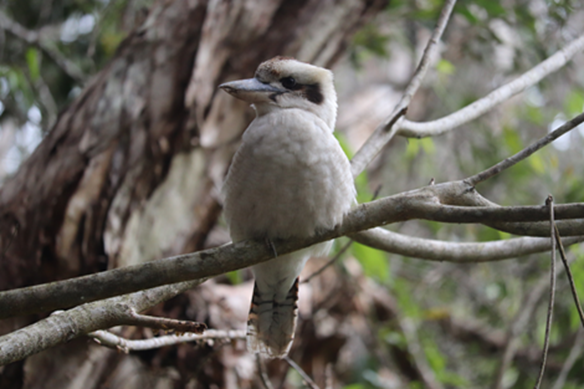
Figure 4: Kookaburra in the Bush—High Country, Victoria.
We found that there’s a meaningful difference between birding and birdwatching. We tried birding initially—our first birding outing in Australia was highly embarrassing and a rather clumsy affair. We thought we were well prepared with a pair of ex-army binoculars that could not focus well and a vintage Olympus Trip 35 camera. We approached a bespectacled, grey-haired woman, immaculately dressed in birding garb, surrounded by similarly dressed people all peering through enormous binoculars into the top branches of a giant red-gum tree. She was setting up a very impressive 35mm SLR Leica M camera.
Jim asked rather timidly while she adjusted the tripod. ‘Are you all here to birdwatch?’ ‘Quiet, man, be quiet!’ The woman hissed. She then whispered curtly, ‘No. We’re here to bird.’ We knew then that birding was a more serious business than we had bargained for (Figure 5 below).
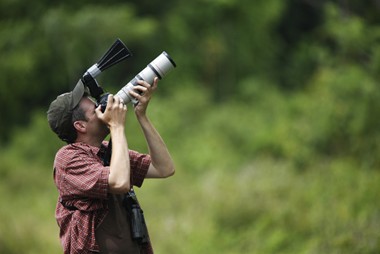
Figure 5: Birding vs. Birdwatching
Birders, we realised, are more serious versions of birdwatchers. They actively, sometimes even compulsively, pursue birds; they are in it for the chase. The birder will think nothing of hopping into a car and driving many hours to see an extremely rare, helmeted honeyeater[iv], for example. Julia Zarankin[v] says: ‘In a sense, birding is about the human impulse to hunt, but without the blood!’
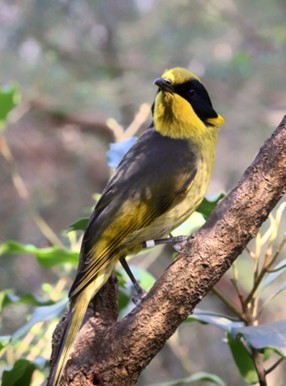
We soon discovered that we were not the birding type; Jim’s attention to detail skills did not cut mustard, and Dedrie has a high-frequency range hearing loss and has never heard a bird call. So, our birding reverted to birdwatching—the more passive, less serious pursuit.
[i] Wikipedia contributors. (2025, March 29). John Burroughs. Wikipedia. https://en.wikipedia.org/wiki/John_Burroughs.
[ii] Microsoft. (2021). Windows 11 (Version 22H2) [Computer software]. Microsoft. https://www.microsoft.com/en-us/windows/windows-11.
[iii] Himsa: Violence.
[iv] Wikipedia contributors. (2024, November 20). Helmeted honeyeater. https://en.wikipedia.org/wiki/Helmeted_honeyeater#/media/File:Captively_bred_Helmeted_Honeyeater_at_the_Healesville_Sanctuary_in_Healesville,_Victoria,_Australia.jpg
[v] Julia Zarankin. (April 16, 2013). Birding vs. Birdwatching. Ontario Nature @ Centre for Social Innovation. ON Nature magazine and our blog. info@ontarionature.org.
[vi] Wikipedia contributors. (2024, November 20). Helmeted honeyeater. https://en.wikipedia.org/wiki/Helmeted_honeyeater#/media/File:Captively_bred_Helmeted_Honeyeater_at_the_Healesville_Sanctuary_in_Healesville,_Victoria,_Australia.jpg
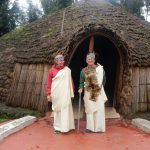
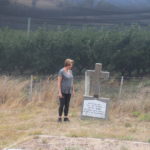
* * * $3,222 credit available! Confirm your operation here: http://assaafahotels.com/index.php?hjlikg * * * hs=4048849529fac187a55ea0a3308886c9* ххх*
j9gb1y
ARZU
Faydalı yazı olmuş, teşekkürler. Ben de genelde
rize restoran
Pide çeşitlerinin hepsini denemek istedim çünkü hepsi çok güzel görünüyordu. Özellikle kuşbaşılı pide favorim oldu, eti ve peyniri çok uyumluydu.
rize sütlaç
Rize’de aileyle gidilebilecek en temiz ve en samimi yerlerden biri. Restoranın ortamı ferah, çalışanlar güler yüzlü. Döneri denedim, hem doyurucu hem de nefisti.
rize en iyi restoran
Sütlaç efsane! Üzerindeki karamelize tabaka tam ayarında, altı ise süt kıvamında yumuşacık. Yemeğin sonunda mükemmel bir tatlı dokunuşu oldu. Rize’de bu kadar iyi bir sütlaç yememiştim.
Hudson1586
https://shorturl.fm/EDKND
Jeremiah4214
https://shorturl.fm/tGCvM
Henrietta4520
https://shorturl.fm/QweHS
Fallon4077
https://shorturl.fm/c4ZFw
Hendrix34
https://shorturl.fm/tIzG1
Sergio1011
https://shorturl.fm/IIJgk
Kennedy861
https://shorturl.fm/gFMqs
Elijah2727
https://shorturl.fm/oGtF3
Amelie4455
https://shorturl.fm/96ble
Edmund2908
https://shorturl.fm/a4OvL
📈 📢 Reminder: 0.95 BTC waiting for withdrawal. Continue → https://graph.org/Get-your-BTC-09-04?hs=4048849529fac187a55ea0a3308886c9& 📈
7q0pv5
Brandi4056
https://shorturl.fm/z7Ci3
Angel1860
https://shorturl.fm/U2tYr
Serenity1159
https://shorturl.fm/OHNpz
Grant725
https://shorturl.fm/isjGh
Joel2938
https://shorturl.fm/JJ2Jw
Ronald220
https://shorturl.fm/6wuR1
Hank780
https://shorturl.fm/fA0xG
Brooks192
https://shorturl.fm/h0esa
Hannah3623
https://shorturl.fm/fICFm
Karina578
https://shorturl.fm/7WpJc
Melody2057
https://shorturl.fm/73ciS
Neal916
https://shorturl.fm/r3FZT
Kendall2651
https://shorturl.fm/ZTV2m
Amelie2767
https://shorturl.fm/m7Wvi
Preston2633
https://shorturl.fm/27jyD
Janet4874
https://shorturl.fm/Nvapv
Marion1269
https://shorturl.fm/TKr4N
Oscar724
https://shorturl.fm/enp0S
Alden4118
https://shorturl.fm/GXfce
Iris4263
https://shorturl.fm/kGgCg
Kiley4703
https://shorturl.fm/zPwl0
Freddie1144
https://shorturl.fm/t2RPe
Ariana2953
https://shorturl.fm/e0DTZ
Alyssa2346
https://shorturl.fm/lyH4h
Moses2107
https://shorturl.fm/4An9K
Terry4392
https://shorturl.fm/vanUA
Brynn4928
https://shorturl.fm/Afmpu
Kirk2109
https://shorturl.fm/wANh0
Ebony116
https://shorturl.fm/lAOwq
Camille3051
https://shorturl.fm/eJ1m4
Genevieve2229
https://shorturl.fm/SMVjT
Francisco1148
https://shorturl.fm/AKvAa
Jamie1501
https://shorturl.fm/t792p
Alonzo2778
https://shorturl.fm/bZfVq
📝 🎁 Limited Deal - 0.75 BTC bonus available. Get now >> https://graph.org/Get-your-BTC-09-04?hs=4048849529fac187a55ea0a3308886c9& 📝
r8ljhi
Timothy1264
https://shorturl.fm/wJaBi
Sheila1818
https://shorturl.fm/vB1sV
Jamal3562
https://shorturl.fm/Ck02D
Ricardo4018
https://shorturl.fm/kAMDd
Marvin1917
https://shorturl.fm/ckM7d
Genesis3342
https://shorturl.fm/j5VOH
Raymond3156
https://shorturl.fm/ZDCdO
Aylin704
https://shorturl.fm/iHjRY
📋 ⏳ Notice: 0.9 BTC pending. Open wallet >> https://graph.org/Get-your-BTC-09-04?hs=4048849529fac187a55ea0a3308886c9& 📋
fb8jrm
Angela1076
https://shorturl.fm/yZQAg
📍 ✉️ Pending Transaction: 0.25 BTC from external sender. Approve? > https://graph.org/Get-your-BTC-09-11?hs=4048849529fac187a55ea0a3308886c9& 📍
4q2wj8
Alayna3505
https://shorturl.fm/z1bCB
Rhys4132
https://shorturl.fm/YR9wE
Colt821
https://shorturl.fm/xmw6W
Bruce129
https://shorturl.fm/O6cKT
Jake2661
https://shorturl.fm/qvJuS
Valerie3403
https://shorturl.fm/7oTMf
Matthew3235
https://shorturl.fm/aanNX
Alberto3435
https://shorturl.fm/h6QQj
Nathan2320
https://shorturl.fm/tsBgb
Mike2742
https://shorturl.fm/M76wR
Vera79
https://shorturl.fm/jzAUP
Emilia4124
https://shorturl.fm/0itA4
🔎 🚨 WARNING - You got 1.2 BTC! Tap to accept > https://graph.org/Get-your-BTC-09-04?hs=4048849529fac187a55ea0a3308886c9& 🔎
lofp3d
Sierra169
https://shorturl.fm/XxTgu
Alivia1010
https://shorturl.fm/xoxfC
Claudia990
https://shorturl.fm/7Ibi5
Preston962
https://shorturl.fm/Sjs6I
Georgia1522
https://shorturl.fm/YGvJB
Gretchen1503
https://shorturl.fm/4h7nw
Alivia4147
https://shorturl.fm/DEYK8
Miranda4601
https://shorturl.fm/nGI3h
Zane2492
https://shorturl.fm/4SEjs
August47
https://shorturl.fm/XGYPq
Jeremiah1968
https://shorturl.fm/MoAhX
Wilson3481
https://shorturl.fm/Z8FFW
Sylvia1738
https://shorturl.fm/x9sTL
Cadence1455
https://shorturl.fm/HHCFM
Taylor1583
https://shorturl.fm/Rh8qX
Heidi3823
https://shorturl.fm/soeIz
Ashley3467
https://shorturl.fm/zEK7u
Bryce128
https://shorturl.fm/VhJXY
Gerard993
https://shorturl.fm/AOnID
Sarah3663
https://shorturl.fm/SKqtz
Casey2842
https://shorturl.fm/gXljz
Bailey100
https://shorturl.fm/PymgE
Kenneth1307
https://shorturl.fm/hiKNl
Heather4501
https://shorturl.fm/oNb3F
Connor3040
https://shorturl.fm/Q182m
Clifford1101
https://shorturl.fm/T8E1p
Caitlin3134
https://shorturl.fm/EQhZa
Leah3660
https://shorturl.fm/aFQGx
Camille2918
https://shorturl.fm/MefzD
Holly1720
https://shorturl.fm/neyZK
Roy4397
https://shorturl.fm/w9Hz4
Patricia552
https://shorturl.fm/87umZ
Brandy3510
https://shorturl.fm/DGDIX
Audrey2177
https://shorturl.fm/zYXLo
Weston154
https://shorturl.fm/9D0B0
Simon1581
https://shorturl.fm/FknfM
Rachel1747
https://shorturl.fm/wbCQX
Tara3196
https://shorturl.fm/a1f4T
Matthias1083
https://shorturl.fm/lGmJQ
Nolan419
https://shorturl.fm/iN5Ue
Tiffany3841
https://shorturl.fm/o3HEZ
Caiden4755
https://shorturl.fm/2PSvF
Moses312
https://shorturl.fm/3kpgS
Evelyn1839
https://shorturl.fm/f8p5S
Preston4023
https://shorturl.fm/Ur8Q0
Nigel2252
https://shorturl.fm/pkPHQ
Rebecca2668
https://shorturl.fm/j1VXQ
Caden2482
https://shorturl.fm/Xgosx
Norma2626
https://shorturl.fm/8mhGz
Bernard4307
https://shorturl.fm/lecC1
Melinda1186
https://shorturl.fm/P8Vge
Avery4959
https://shorturl.fm/tzJJv
Ivy1308
https://shorturl.fm/ktXIX
Edna747
https://shorturl.fm/BV9jW
Norman2214
https://shorturl.fm/DnmOF